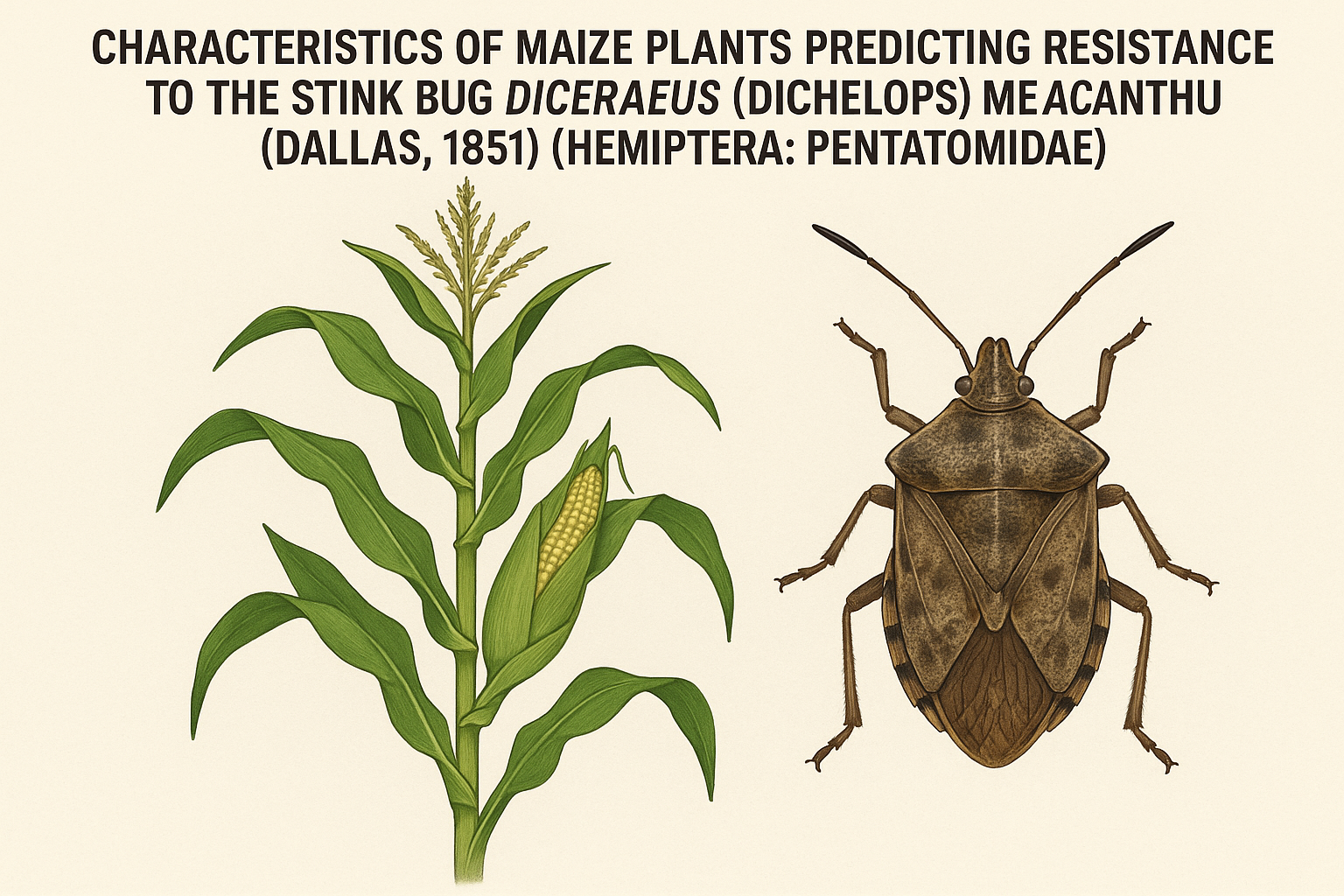Characteristics of Maize plants predicting resistance to the Stink Bug Diceraeus (Dichelops) melacanthus(Dallas, 1851) (Hemiptera: Pentatomidae)allas, 1851) (Hemiptera: Pentatomidae)
DOI:
https://doi.org/10.4238/kbccgn29Keywords:
Genotypic Variation; Injury; Second Crop; IPM; Escape; Resistance.Abstract
The green-belly stink bug, Diceraeus melacanthus (Dallas, 1851) (Hemiptera: Pentatomidae), is a pest in the early stages of maize cultivation. Both adults and nymphs feed on plant sap, causing injuries to the plant that result in reduced productivity. To identify the characteristics present in maize genotypes that enable the selection of genotypes resistant to this pest infestation, we evaluated the effect of plant growth rate and initial development on injury reduction. The experiments were conducted in a greenhouse at Embrapa Maize and Sorghum, in Sete Lagoas, with
35 maize hybrids were developed under the breeding program in commercial or pre-commercial stages. We evaluated (i) characteristics that conferred a higher initial development speed of maize, and (ii) stink bug injury in twelve maize hybrids. The evaluated characteristics were: phenological
stage, plant height, stem diameter, and injury score. The obtained data were subjected to Pearson correlation, linear regression, ANOVA, and the Scott-Knott test at 5% significance in the R software. As a result, we found that plant height (d.f.= 46, p< 0.001, r= -0.868) had a negative correlation with
the injury score, meaning that the greater this characteristic in the plant, the less the injury received. The phenological stage (d.f.= 46, p< 0.001, r= -0.618) and stem diameter (d.f.= 46, p= 0.036, r= -0.036) also showed this trend, but to a lesser extent. We conclude that growth parameters in the early development stages of maize plants are effective in determining resistance to stink bug injury and are therefore important characteristics for the selection of genotypes resistant to this pest.




